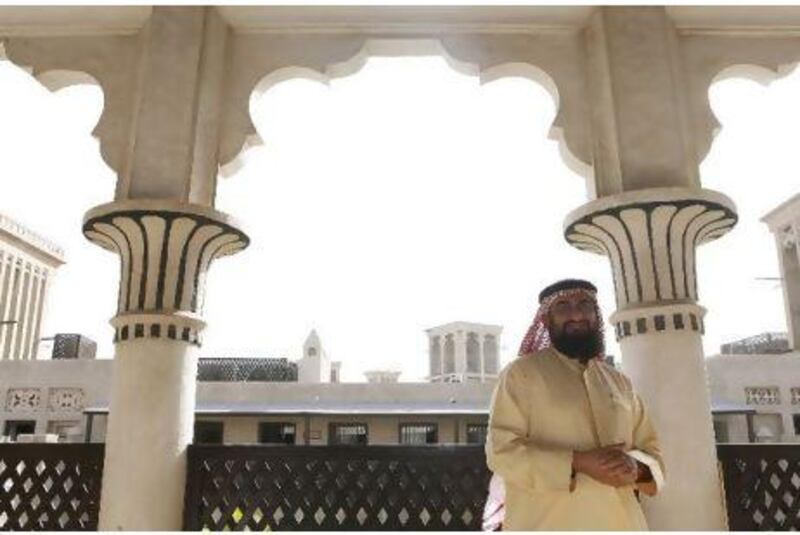DUBAI // The cobbled streets of Bastakiya lead to a neighbourhood of wind towers, decorative gypsum panels and open courtyards inside some of the best preserved examples of Emirati architecture.
However, while the 54 buildings in Bur Dubai have been protected and restored, there remain hundreds of other historical structures across the country at risk of damage or demolition, says Rashad Bukhash, the chairman of the UAE Architectural Heritage Society.
While local regulations in Dubai, Sharjah and Abu Dhabi have provided protection for historical buildings, a federal law has yet to be passed, leaving buildings in other parts of the country vulnerable.
"If there is a federal law, then none of these historical buildings can be demolished and they will be protected," Mr Bukhash says. "Hopefully it will be passed in the next three months."
That regulation has been a long time coming. According to Mr Bukhash - who is also the director of the Dubai Municipality architectural heritage department - the idea of enacting a federal law was first floated in 2001. The draft law to protect historical buildings is now due to be transferred to the federal cabinet for approval.
The Architectural Heritage Society estimates that of the approximately 2,800 historical buildings it has identified as being in need of protection, one or two are damaged or demolished every week - about 4 per cent of the structures each year - showing that the need is pressing. The sites identified as needing protection are mostly concentrated in four emirates, with about 500 in Abu Dhabi, 690 in Dubai, 600 in Sharjah and 700 in Ras al Khaimah. Fujairah has 300 or so, and Ajman and Umm al Qaiwain have 50 each.
According to the society, which was among the bodies that reviewed the draft law, federal legislation for the protection of historical buildings would include specifications for which buildings qualify for protection and restoration, as well as penalties for those who break the rules.
"It is not just about restoring the buildings and keeping the doors locked, but also using them and learning from them," Mr Bukhash says. "Some of the buildings are 100 per cent green buildings, with natural lighting and wind towers. They have a lot to give to modern architecture."
While the UAE has become known for its modern architecture, particularly the Dubai skyline and its towering Burj Khalifa, there are many historical and archaeological sites and buildings of note across the country. Al Bidya Mosque in Fujairah dates from the 15th century and Al Fahidi fort in Dubai was built in 1799. Many traditional Emirati buildings have been influenced by the architecture of places such as southern Iran, Oman, East Africa and the Indian subcontinent.
The UAE Architectural Heritage Society was established as a non-profit organisation in 2003. Farah al Bastaki, who was among the society's founding members and serves on its board, believes protecting historical buildings is linked to preserving national identity.
"It's about preserving memories of the area and the history," she says. "There is a very urgent need for a federal law because of all of the development happening, which has affected architectural heritage."
The society now has more than 2,500 members from 45 nationalities and is trying to attract more people to join, especially young people, in its efforts to protect historical buildings.
"Since they are young, we want to instil in them a love for heritage and culture," Mr Bukhash says. "Every person who lives on the land of the Emirates can be a member if they have a love for architecture and heritage, and protecting it."
Members take part in lectures, trips and seminars focusing on the Emirates' architectural heritage, from Al Gharbia in the west of Abu Dhabi to the Northern Emirates.
"Our goal is to protect as much of our archaeological and architectural heritage as possible for our coming generations," Mr Bukhash says. "Otherwise it will fade away. You cannot buy history with money. If it's erased, you can't bring it back."





